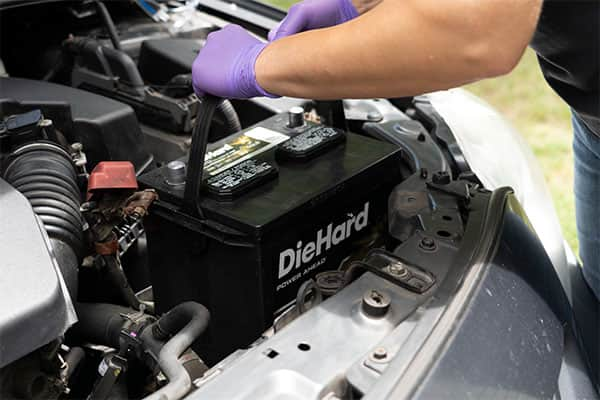
Car Battery Voltage: What You Need to Know
While most people know that car batteries are 12-volt DC batteries, there’s a lot more to the story than that, and a car battery voltage range test may be just what you need to find out all the necessary details about your battery’s overall condition. When comparing your car battery’s voltage measurements with the normal battery voltage range for that specific type of battery, you can learn a great deal about the current state of your battery and charging system, how likely it is to fail, and how important it might be to have it replaced.
Measuring your car battery’s voltage can be a great way to determine how charged your battery might be. The ideal voltage with the engine running is between 13.7 and 14.7V. With the engine off, you should get a reading of 12.6 volts. Keep reading to learn more, and if you find that it's time to replace your battery, we recommend learning more about why DieHard car batteries are the best and which one is right for your vehicle.
The Basics of Taking a Voltage Reading
Knowing your battery’s voltage range is a good starting point, but it isn't enough. A healthy battery might have low voltage if it's discharged--it's not an indicator of the battery's internal health. You also have to know how to measure your car’s specific voltage at any given time, and be able to compare it with past results to find out whether or not the battery might be dying. Using a multimeter to check voltage is simple. Set the meter to read DC volts and then touch the positive cable of the voltmeter to the positive terminal of the battery, and the negative cable of the meter to the negative terminal. If you get a negative voltage reading, that means you've swapped the leads on the multimeter. Simply swap them back, and you'll get an accurate reading.
What Is a healthy Car battery voltage?
Measuring your car battery’s voltage can be a great way to determine how charged your battery might be. The ideal car battery voltage with the engine running is between 13.7 and 14.7V. With the engine off, you should get a reading of 12.6 volts. If the battery isn’t fully charged, it will diminish to 12.4V at 75%, 12V when it’s only operating at 25%, and down to 11.9V when it’s completely discharged. This data and the way it relates to the design of your battery should provide you with some useful insight into the functioning capacity of your car battery.
Car Battery Load Tests
Measuring voltage tells you about the charge of the battery, but is not an accurate indicator of the health of the battery. In other words, a battery might have a low charge (and therefore a low voltage) but still be a healthy battery. Performing a load test is a reliable check of the battery's internal health. A load tester is a specialized, yet affordable, piece of equipment used to determine the voltage generated by the battery while a load is placed on the battery. That value will understandably be lower than the standalone voltage test. When performing a load test, you should apply a load to a fully charged battery for no more than 30 seconds and should not see the voltage drop below 9.6V. If it does, replace the battery.
Remember that you can always stop by your local Advance Auto Parts store to have your battery tested for free. But if you plan to load test your battery on your own, there are a few safety tips to keep in mind:
Always wear safety glasses when dealing with batteries. There is a risk of explosion, and you only get one set of eyes.
Don't smoke around batteries.
Before you start to work around your battery, quickly inspect it.
If you see a buildup of corrosion, not only is it a skin irritant but it's also causing lower voltage. Clean the surface of the battery with a mix of baking soda and water (or, in a pinch, even just a cup of hot water).
If you smell sulphur - a rotten egg smell - consider letting a professional handle your battery.
Find an Advance Auto Parts store close to you.
Do You Have to Replace Your Battery?
So let’s say your battery measures less than 12V on a regular basis, and it failed the load test. Should you replace it? This isn’t a decision you can take lightly, especially if your car requires a more expensive battery. You can first start by using a charger or jump starting your vehicle. If that fails, you may also attempt to top up the distilled water in your battery for added performance, if your battery is the type that allows access to the cells. If your car battery voltage range doesn’t improve, then it might be time to start looking for a brand new unit.









